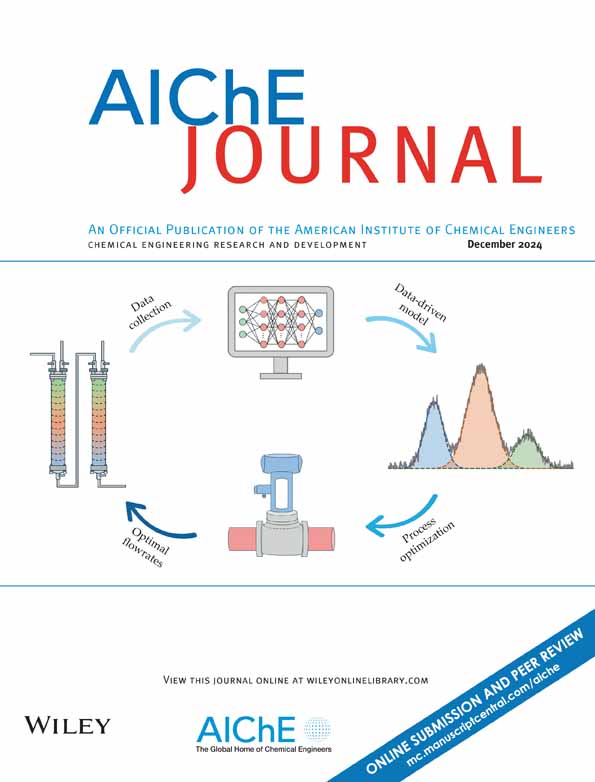Lithium extraction from salt‐lake brines using dicationic ionic liquids: ePC‐SAFT modeling and molecular mechanisms
IF 3.5
3区 工程技术
Q2 ENGINEERING, CHEMICAL
引用次数: 0
Abstract
This work proposes a novel strategy for enhancing Li用指示离子液体从盐湖盐水中提取锂:ePC - SAFT模型和分子机制
本研究提出了一种新的策略,用于使用基于指示离子液体(DIL)的萃取剂提高从高Mg2+/Li+比的盐湖盐水中提取Li+。以DIL [DOMIM][Tf2N]2、磷酸三丁酯(TBP)和二氯甲烷(DCM)为稀释剂的三元混合物作为Li+的单级萃取效率(86.40%)和Li+/Mg2+的分离选择性(302.37)高于以IL [OMIM][Tf2N]代替DIL的三元混合物。在五次循环再生过程中,可保持较高的Li+萃取性能。电解质微扰链统计关联流体理论被用于定性预测所谓的“有机-无机复合强电解质体系”有机相中Li+和Mg2+的活度系数。斜率分析光谱特征和量子化学计算揭示了DIL在分子水平上的增强萃取机制(即Li+以2Li+ 3TBP + 2[Tf2N]−络合物的形式被Li+萃取)。本研究为合理设计新型IL基萃取剂,高效萃取盐水中的Li+提供了指导。
本文章由计算机程序翻译,如有差异,请以英文原文为准。
求助全文
约1分钟内获得全文
求助全文
来源期刊

AIChE Journal
工程技术-工程:化工
CiteScore
7.10
自引率
10.80%
发文量
411
审稿时长
3.6 months
期刊介绍:
The AIChE Journal is the premier research monthly in chemical engineering and related fields. This peer-reviewed and broad-based journal reports on the most important and latest technological advances in core areas of chemical engineering as well as in other relevant engineering disciplines. To keep abreast with the progressive outlook of the profession, the Journal has been expanding the scope of its editorial contents to include such fast developing areas as biotechnology, electrochemical engineering, and environmental engineering.
The AIChE Journal is indeed the global communications vehicle for the world-renowned researchers to exchange top-notch research findings with one another. Subscribing to the AIChE Journal is like having immediate access to nine topical journals in the field.
Articles are categorized according to the following topical areas:
Biomolecular Engineering, Bioengineering, Biochemicals, Biofuels, and Food
Inorganic Materials: Synthesis and Processing
Particle Technology and Fluidization
Process Systems Engineering
Reaction Engineering, Kinetics and Catalysis
Separations: Materials, Devices and Processes
Soft Materials: Synthesis, Processing and Products
Thermodynamics and Molecular-Scale Phenomena
Transport Phenomena and Fluid Mechanics.
 求助内容:
求助内容: 应助结果提醒方式:
应助结果提醒方式:


